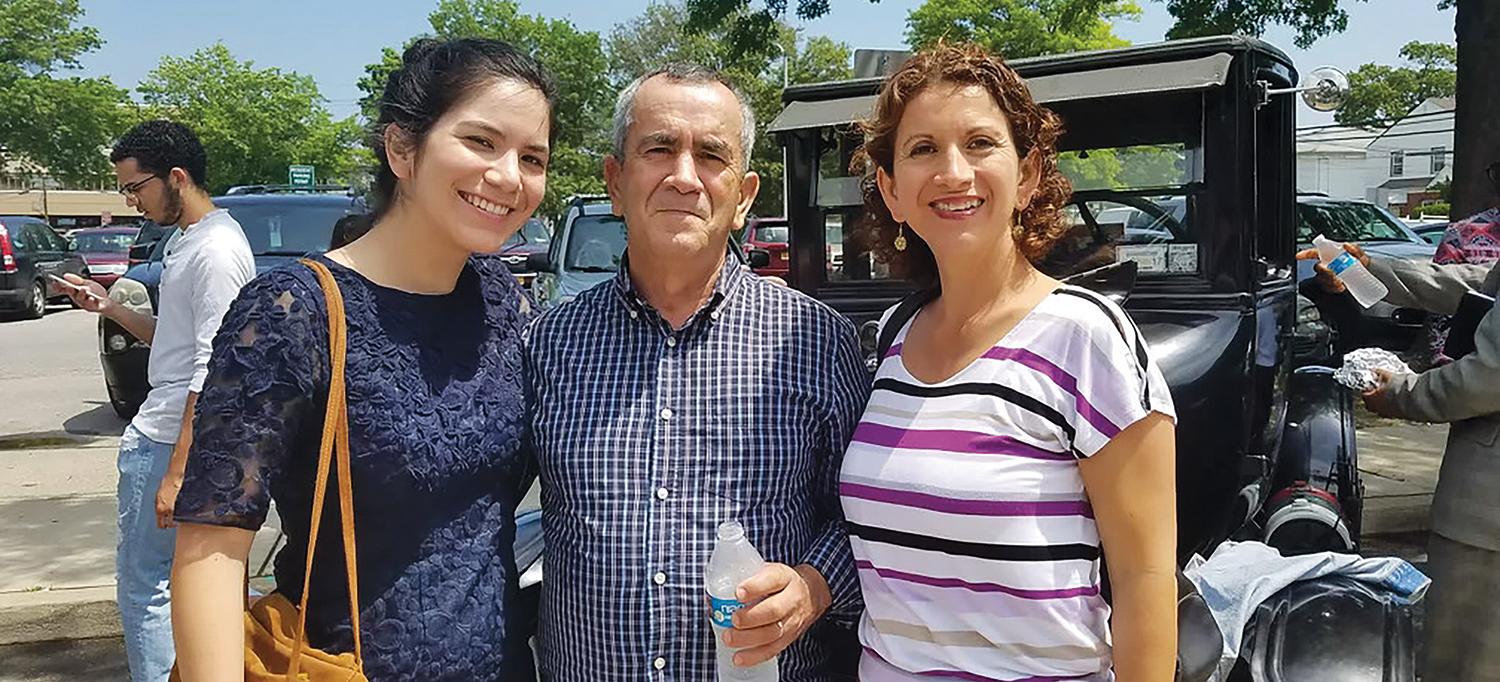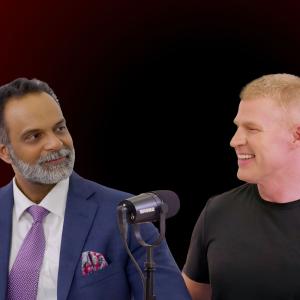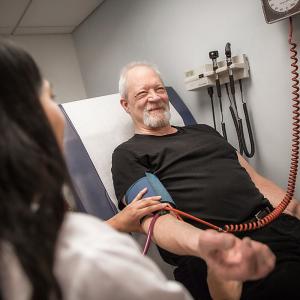First-of-Its-Kind Treatment for an Intractable Heart Arrhythmia Debuts in New York City

Carlos Feijoo became the first patient in New York City to receive radiation therapy to treat a persistent heart arrhythmia. “I’m more than grateful for everything NYU Langone has done for me,” he says. “This procedure gave me my life back.”
Image Courtesy of Carlos Feijoo
In 2008, Carlos Feijoo passed out while jogging near his home in Valley Stream, New York. Doctors could not pinpoint a cause. So he carried on like normal. Four years later, though, it happened again. This time, Feijoo was referred to the Heart Rhythm Center at NYU Langone Health.
A series of scans and tests showed that Feijoo, now 73, had experienced a silent heart attack resulting from coronary artery disease, a buildup of plaque in the arteries that blocks blood flow. The infarction had caused scarring in the lower left chamber of his heart, leaving him with periodic episodes of an erratic, racing heartbeat. The disorder, a type of arrhythmia called ventricular tachycardia, prevents the heart from pumping properly and, if untreated, can be fatal. “A heart attack predisposes patients to a variety of heart rhythm conditions that require close, expert monitoring to track symptoms and warning signs,” says cardiac electrophysiologist Chirag R. Barbhaiya, MD, assistant professor of medicine at NYU Grossman School of Medicine.
Physicians at the Heart Rhythm Center treat more than 4,500 patients with arrhythmias annually, making it among the most experienced electrophysiology clinics in the nation. Nearly 2,000 of these cases ultimately require catheter ablation, the gold-standard procedure for neutralizing or “ablating” the misfiring cardiac tissue that disrupts the heart’s normal rhythms. But the center has also built a national reputation for tackling complex conditions that defy conventional treatments. “We have the ability to access any technology or approach that is required,” says Dr. Barbhaiya. “There aren’t many places that can say that.”
Feijoo, a retired machinery repairman from Ecuador who has six grown children and seven grandkids, tried everything to keep his racing heart under control. In 2012, under the guidance of his care team at the Heart Rhythm Center, he received medications and a cardioverter defibrillator, an implanted device to detect heart irregularities and emit an electric shock to restore normal rhythm. All was well until 2016, when his defibrillator began activating.
Dr. Barbhaiya performed catheter ablation, and the shocks abated. But they returned with alarming frequency in 2021. “I was worried all the time about being shocked,” says Feijoo.
Dr. Barbhaiya completed a second catheter ablation. Interventional cardiologist Lori Vales Lay, MD, clinical assistant professor of medicine at NYU Grossman School of Medicine, implanted a stent to improve blood flow. Heart failure specialist Shaline D. Rao, MD, assistant professor of medicine at NYU Long Island School of Medicine, adjusted his medications to prevent further weakening of the heart muscle. Finally, Dr. Barbhaiya connected two additional wires from the defibrillator to the heart’s upper chambers to help keep the heart’s contractions in sync.
Despite all these efforts, the shocks continued. Feijoo, overcome by fear, ceased all physical activity. He began to worry that he’d run out of options. But Dr. Barbhaiya saw another way to help. For more than a year, he had been following advances in an experimental technique available at only select medical centers for the treatment of intractable ventricular tachycardia. The procedure, known as cardiac stereotactic body radiation therapy, or cardiac SBRT, uses focused beams of radiation from a linear accelerator to deliver high doses of radiation to a small area. The same technique, SBRT, is a well-established method used in the Department of Radiation Oncology to treat cancer. The difference is that treating the misfiring cardiac tissue that causes the arrhythmia requires just one high-dose session, compared with multiple visits for cancer therapy.
Results from a phase 1/2 clinical trial showed that cardiac SBRT can reduce the frequency of arrhythmic episodes by 89 percent. But delivering radiation to a fast-moving organ like the heart requires an intricate partnership with radiation oncology and a level of expertise that only an elite medical institution can provide. In fact, this would be the first documented case of cardiac SBRT in New York City. “It requires an extremely complex treatment plan, but it’s a potentially valuable tool for patients who don’t respond to conventional therapies,” says Ye Yuan, MD, who led the initiative in the Department of Radiation Oncology until his departure. His successor, radiation oncologist David J. Byun, MD, has been tapped to advance the program.
With the support of Larry A. Chinitz, MD, director of cardiac electrophysiology and the Heart Rhythm Center; Alec Kimmelman, MD, PhD, the Anita Steckler and Joseph Steckler Chair of Radiation Oncology; and Andrew J. Evans, MD, the medical director of radiation oncology—all at NYU Grossman School of Medicine—the two departments brought the SBRT treatment to NYU Langone and offered it to Feijoo. “We are committed to finding solutions to the most complex cardiac conditions and delivering optimal care to our patients by using all the resources available to us,” says Dr. Chinitz.
The procedure itself lasts less than 15 minutes. However, the prep work for each patient can take weeks, and the program took months of planning between Dr. Yuan and Dr. Barbhaiya to create new interdepartmental procedures and workflows and to implement safety protocols. The most time-intensive step is creating an exquisitely precise map of the patient’s heart and its trouble areas to define the radiation target. For that, David L. Barbee, PhD, director of physics for radiation oncology; Hesheng Wang, PhD, assistant professor of radiation oncology; and Ting Chen, PhD, clinical associate professor of radiation oncology—all at NYU Grossman School of Medicine—developed custom software to fuse multiple views of Feijoo’s heart. Some images were taken during the catheter ablations; some were generated using a vest embedded with hundreds of electrodes to map the location of faulty electrical activity. Other images came from a CT scan that simulates the patient’s positioning during radiation treatment, and more still from a cardiac MRI overseen by Leon Axel, MD, PhD, professor of radiology, medicine, and neuroscience and physiology at NYU Grossman School of Medicine.
“The key was to combine all the imaging into a 3D anatomical map to ensure that we targeted the precise area, within 5 millimeters,” says Dr. Barbee. His team performed multiple dry runs on anthropomorphic “phantoms”—dummies made from materials with tissue characteristics similar to humans—to fine-tune the optimal delivery angles and ensure an accurate radiation dose would be delivered.
On December 10, 2021, Feijoo completed the therapy with less than four minutes of “beam on time.” Unlike catheter ablation, it required no anesthesia or recovery time. Feijoo walked out of the radiation therapy suite and was discharged the next day. Within three months, he was cleared to fly to Ecuador for an extended visit and was walking up to two hours a day. “I’m feeling better and better, and my mental health has improved,” says Feijoo.
There’s no guarantee that his heart rhythm problem won’t return, but the positive early outcome has led Dr. Barbhaiya and Dr. Byun, clinical instructor of radiation oncology at NYU Grossman School of Medicine, to plan the next cardiac SBRT treatment. “If it proves to be safe in the long term, I could imagine its use expanding to patients with less severe symptoms,” says Dr. Barbhaiya.
Dr. Kimmelman cites NYU Langone’s unique collaborative environment among departments for advancing care. “We have the ability to provide these patients with world-leading cardiology services, and if medical and conventional ablation procedures are unsuccessful, we can now offer them an innovative, lifesaving procedure,” says Dr. Kimmelman.
Feijoo, whose heart function is stable, hopes his example will encourage other patients with his rhythm disorder to try the therapy. “I’m more than grateful for everything Dr. Barbhaiya and NYU Langone have done for me,” he says. “This procedure gave me my life back.”

